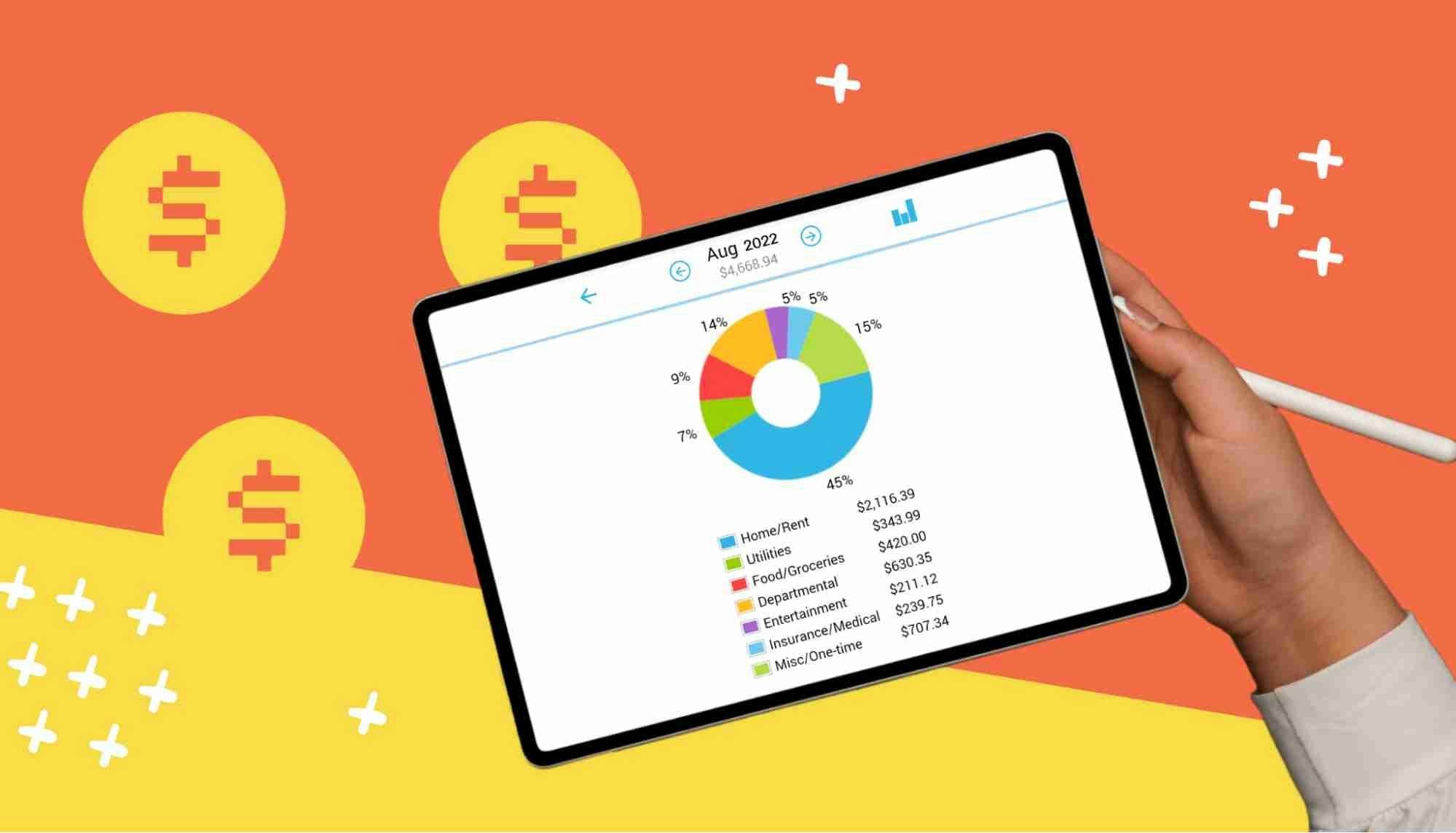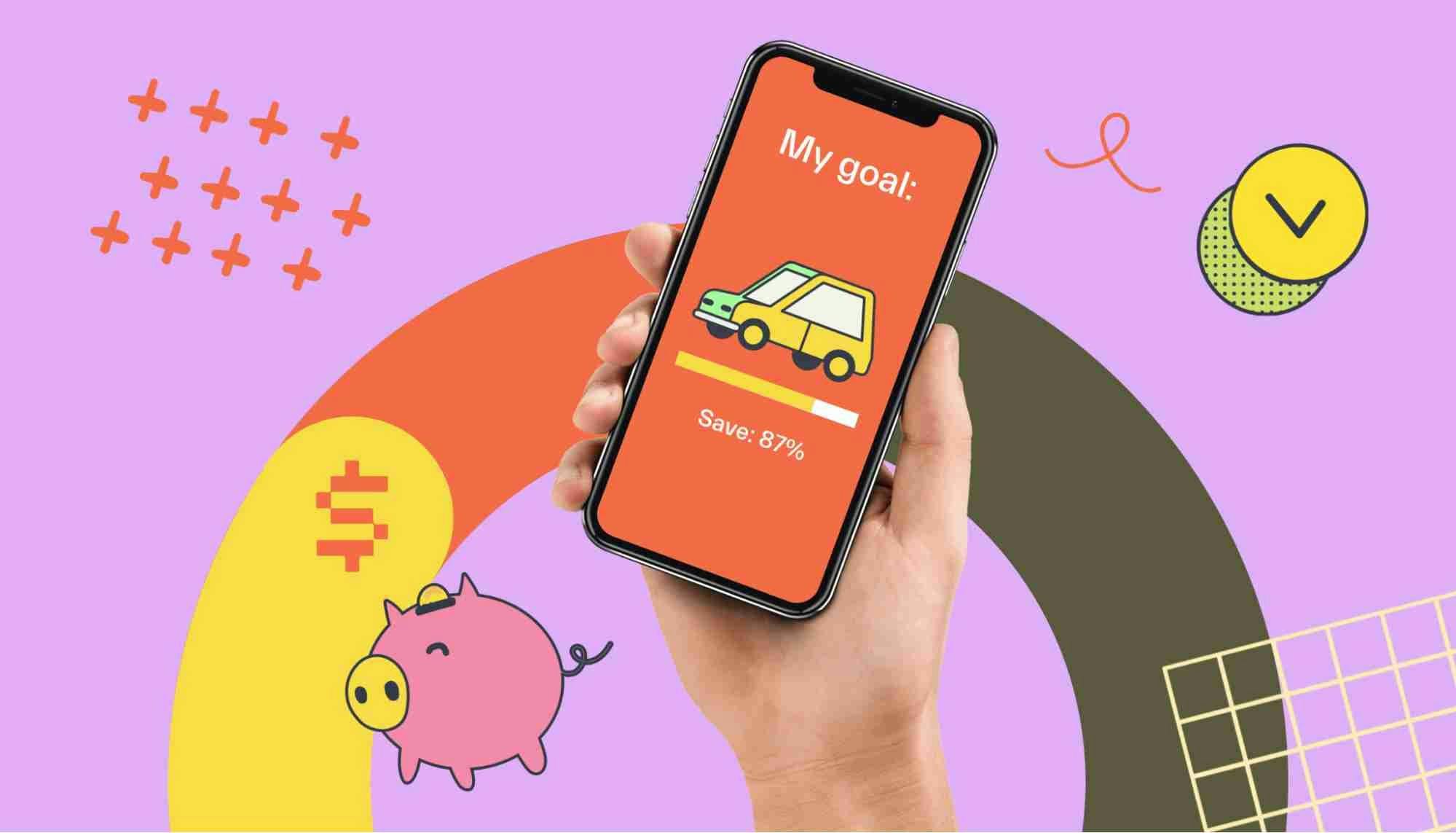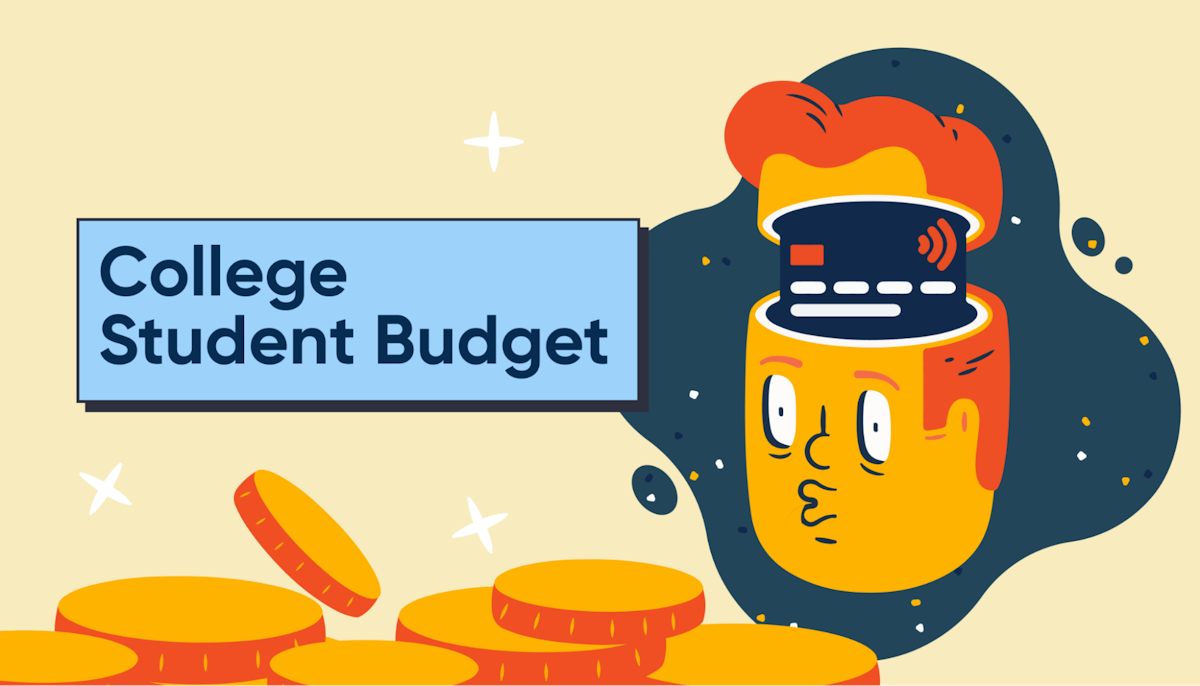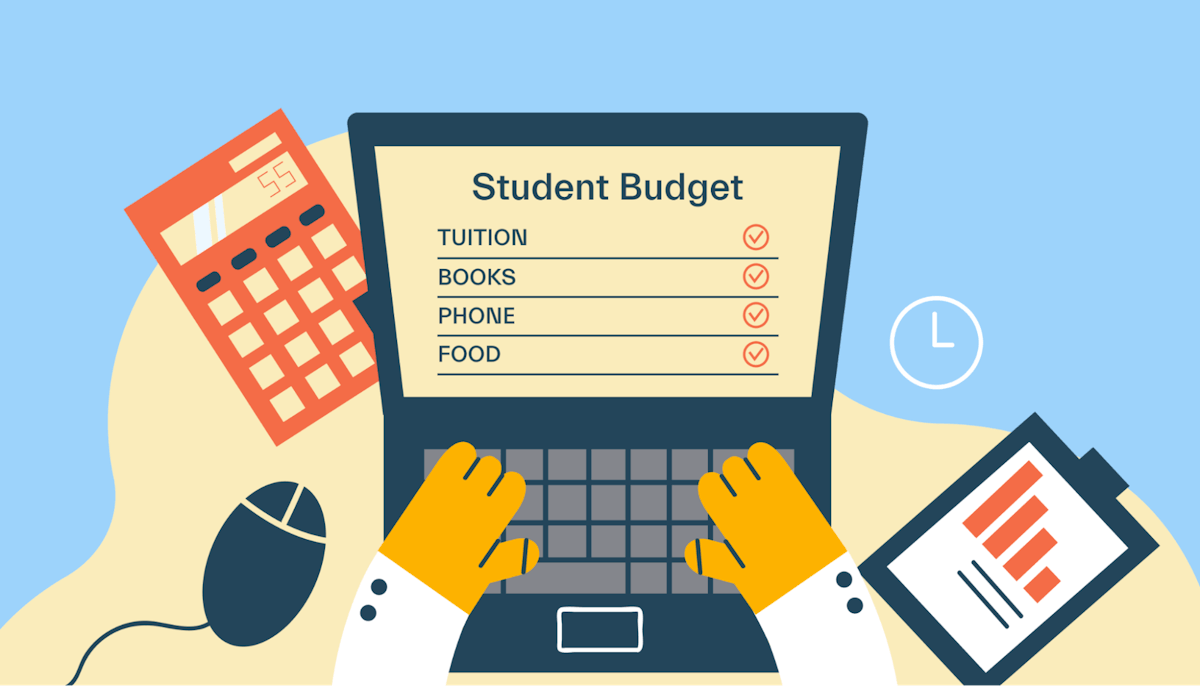Budgeting •
July 18, 2022
4 best budgeting apps for college students for 2022
Want to get control of your finances? Check out this Mos guide on the top budgeting apps for college students.

Staying in control of your finances can be tough—especially if you’re a college student. Between classes, work, and trying to maintain some sort of social life, sitting around crunching numbers is the last thing you want to be doing.
That’s where a budgeting app comes in.
With the help of a purpose-built budgeting app, you’re able to score a constant, real-time view of all your income and expenses. That makes it a whole lot easier to make responsible financial choices and plan for your financial future. But not all budgeting apps are created equal—and some budgeting apps are going to be way more useful for college students than others.
This guide explains what a budgeting app is, what a college student budget should include, the features you should look for in a budgeting app, and the best budgeting apps for college students.
What is a budgeting app?
Before we talk about the best budgeting apps for college students, it’s worth taking a step back and covering exactly what we mean by “budgeting app.”

Simply put, a budgeting app is a software application that people can use to keep track of their personal finances. These apps could be in-browser or on a mobile device—and they’re designed to tabulate and assess all of the incoming and outgoing numbers that keep you moving.
Those numbers could include everything from your income and expenses to your savings, debt payoffs, investments, and more.
So, how is a budgeting app different from an accounting app?
In a nutshell, an accounting app focuses on business expenses rather than personal expenses. Accounting software is designed to look at company income, overhead expenses, and corporate tax burdens that most individuals don’t have to worry about.
Budgeting apps have gained a lot of traction over the past couple of years. 73% of smartphone users say they’ve used an app to manage their finances in the past month—and when you look at the benefits of a budgeting app, it’s not hard to see why.
With a budgeting app, you can sync all your financial accounts so that you have one consolidated overview of your financial situation. You can get spending updates in real-time, which allows you to understand how much cash is at your disposal.
One of the biggest mistakes people make about their finances is a lack of awareness about how much they’re spending every month. With the help of a budgeting app, users can organize their spending history into categories—and the best budgeting apps can then use that history to identify trends and make suggestions about how you may want to alter your spending habits.
What should a college student budget include?
If you want to use a budgeting app effectively, you will need to develop a clear understanding of what your college budget should include.
At first glance, coming up with a smart college budget can be pretty difficult to crack.

That’s because there are so many college costs you have to pay to get through school. The College Board estimates a moderate college budget for an in-state student attending college comes in at $26,820. Go out-of-state, and your budget instantly jumps to an average of $43,280 per year.
So, what expenses do you need to include in your budgeting app? Let’s quickly break down the top expenses that should be forming your budget as a college student.
Tuition fees
It won’t surprise you to know that college tuition is going to be the single greatest expense in your budget.
Currently, the average tuition at a 4-year college in the US is $28,775 per year. That being said, it’s important to note that prices vary based on whether the school is public, private, in-state, or out-of-state.
Although you’ve got to budget for these fees, it’s worth noting that financial aid will ordinarily cover the bulk of those expenses through loans, grants, and scholarships.
Accommodation
The second-greatest expense in your college budget is going to be room and board. After all, it costs money to live, right?
The precise cost of your room and board will depend on whether you’re living on-campus or off-campus. But the average cost of room and board at a 4-year institution currently ranges from $10,216 to $11,945 per year.
If you’re staying on-campus, some of these costs might be covered through financial aid. If you’ve organized a private rental, you’re probably going to be paying out of your own pocket—which means this is one of the first essentials that’ll need to go into your monthly budget.
Administrative fees
Admin fees aren’t usually sky-high—but they add up pretty quickly. We’re talking about fees like parking stickers, gym memberships, extracurricular activities, and everything in between.
Most of these fees aren’t normally covered by financial aid, and they tend to come in waves throughout the year. That means you need to keep close tabs on future expenses and ensure you have enough money in the bank to cover them.
Books and supplies
Students are currently paying an average of about $1,334 on college textbooks and course supplies. This includes everything from your essential reading lists to things like field trips, lab supplies, and more.
Again, these items are usually out-of-pocket expenses you must prepare for—so plan accordingly.
New tech
According to researchers, about 60% of college shoppers have to buy new electronics for each school year, spending about $306.41 per year.
Here, we’re talking about your phone, laptop, tablet, headphones, and anything else you might need. These are all one-off expenses. But in this day and age, they’re also fairly frequent.
Transportation
Your average college student spends $1,050 to $1,800 on transportation costs. This covers a number of areas like bus fares, train tickets, car insurance, car payments, filling up with gas, maintenance, and loads of other extras.
Again, this all adds up pretty quickly—and like a lot of these other budget lines we’ve already covered, transportation isn’t normally covered by financial aid.
Personal expenses
Pretty much anything we haven’t covered can go into the “personal expenses” category. This might include your clothes, eating out, tailgating, going to the movies, toiletries, streaming services, and whatever else.
The amount you’ll need to budget for in this area depends on your lifestyle and your income. But it’s important to remember that personal expenses add up really quickly. This is the first area you’ll normally need to cut back on when working to reduce your budget.
What should I look for in a budgeting app?
We’ve covered what a budgeting app is and what numbers you should consider when using that app. But there are loads of budgeting apps out there—and not all of them are great.
When looking for the best budgeting apps, there are some key features you should be particularly focused on.
The first one is price. There are some amazing free budgeting apps out there. Some might give you a free trial period, while others go straight into monthly or annual fees. You shouldn’t spring for the most expensive budgeting app just because it looks fancy— make sure you do your homework and pay what you can afford.
Next, you should be looking for a budgeting app that can sync with other accounts. By syncing your app with multiple accounts like your checking accounts, credit card, digital wallet, savings accounts, or other types of bank accounts you may have, your app will give you a bird’s-eye view of your total financial landscape.
Every budgeting app worth its salt should also include some form of bill payment or budgeting tracker. By setting up automatic payments or monthly reminders to pay upcoming bills, your app will make sure you never get any nasty surprises. Your ideal budgeting app will also have automatic transaction categorizing so you can quickly identify where you’re spending the most and why.
Goal setting is an important one, too. A lot of budgeting apps will let you create different financial goals. You’ll be able to chart your progress in real-time and even set up multiple goal funds to save for different items (or an emergency fund).
Finally, you may want to check out an app that offers budget sharing. If you split your finances with a roommate or a partner, using the same budget app will ensure you’re both on the same page at all times where your numbers are concerned.
What are the best budgeting apps for college students?
No 2 savers are identical, so the best budgeting app for you might not be the best for every other college student.

But to help you sift through that never-ending sea of apps, here are 4 of our favorite budgeting apps for college students.
Best app for saving: YNAB
You Need a Budget (YNAB) is a budgeting app designed to help you plan ahead (rather than track your transactions).
YNAB uses a zero-based budgeting system, which means that you have to make a plan for every single dollar that you earn. When you get paid, you can tell YNAB how much of your paycheck should be going toward different spending categories or savings goals.
Just be aware that, unlike some other budgeting apps, YNAB isn’t free. After a free trial period, you’ll have to pay $14.99 per month.
Best app for investing: Personal Capital
Personal Capital is essentially a budgeting app for investors. If you’re investing in securities or crypto rather than just saving extra cash, this app will help you budget how you spend on your portfolio.

Personal Capital also automatically tracks your purchases and investments to analyze your spending and where your investments are headed. Just be aware that you’ll need to pay a management fee of 0.89%—but you’ll get free access to Personal Capital’s money-tracking dashboard.
Best app for couples: Honeydue
Are you and your significant other already pooling some (or all) of your finances? Check out Honeydue.

Honeydue is a budgeting app for couples that allows both users to sync bank accounts, student loans, investments, and credit cards onto one account. This lets both of you have a full picture of your combined finances—although it doesn’t let you choose how much you want to share with your partner.
Honeydue is a free app, and it’s great for helping you and your partner look back and reflect on your spending habits. But it’s not ideal for forward planning.
Conclusion
Nobody wants to wake up to a bank notification saying they’re in the red. Using a budgeting app, you can ensure that you always stay on top of your spending and that you’re living within your means.
It’s important to remember that not all budgeting apps are created equal. You’ve got to consider what you’re looking for in a budgeting app and the key features that matter to you.
Let's get
your money
- Get paired with a financial aid expert
- Get more money for school
- Get more time to do you








